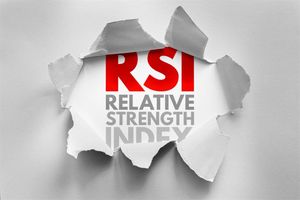
In an era defined by persistent market volatility, inflationary pressures, and a looming sense of economic uncertainty, investors are increasingly turning to a time-tested refuge: consumer staples. These companies, producing everyday necessities, offer a beacon of stability when other sectors falter. Amidst the current economic landscape, giants like Procter & Gamble (NYSE: PG) and Costco Wholesale Corporation (NASDAQ: COST) exemplify the resilience and defensive appeal of this sector, providing consistent demand, robust dividends, and a proven ability to navigate challenging financial headwinds. This shift in investor sentiment underscores a fundamental principle of investing: during uncertain times, essential goods remain indispensable, making their purveyors a compelling choice for portfolio protection.
Why Essential Goods Matter: The Enduring Appeal of Consumer Staples
The current market environment, as of September 2025, is characterized by a complex interplay of geopolitical tensions, persistent inflationary concerns, and lingering fears of an economic slowdown. While central banks have made strides in taming inflation, price growth has shown signs of reacceleration in some data points, maintaining pressure on consumer spending and corporate margins. Furthermore, geopolitical conflicts continue to introduce unpredictable risks, contributing to an overarching sense of investor apprehension. In this climate, the inherent characteristics of consumer staples companies shine through.
Procter & Gamble (NYSE: PG) stands as a quintessential example. With a vast portfolio of indispensable household brands such as Pampers, Tide, Gillette, and Old Spice, P&G's products are non-negotiable for daily life. This ensures a stable and relatively inelastic demand, meaning consumers continue to purchase these items even when their budgets are squeezed. P&G’s robust market share, commanding 9.29% of the broader Consumer Packaged Goods (CPG) sector and an impressive 37.11% in Personal & Household Products as of early 2024, grants it significant pricing power. This allows the company to implement necessary price increases to offset rising input costs without experiencing significant volume loss, particularly in markets like the U.S. where brand loyalty runs deep. Its remarkable dividend history, having increased dividends for 70 consecutive years and paid them for 134, further solidifies its appeal as a defensive play, offering investors a steady income stream. For fiscal year 2024, P&G reported net sales of $84.0 billion (a 2% increase) and 4% organic sales growth, demonstrating resilience through strategic pricing and productivity initiatives.
Similarly, Costco Wholesale Corporation (NASDAQ: COST) epitomizes defensive strength through its unique membership-based warehouse model. By offering bulk quantities of essential groceries, household items, and a curated selection of other goods at competitive prices, Costco appeals directly to consumers seeking value during economically challenging times. Its membership model creates a predictable and recurring revenue stream from annual fees, which significantly contributes to profitability and provides a buffer against rising operational costs. Global membership renewal rates have remained impressively high, recently at 90.2%. Costco's commitment to low prices, even if it means operating at tighter merchandise margins, fosters exceptional customer loyalty. The company’s strategic decision in July 2024 to implement its first membership fee increase since 2017 (effective September 1, 2024) was a carefully considered move to offset rising costs while maintaining its value proposition. For the full fiscal year 2024, Costco reported net sales of $249.6 billion (a 5.0% increase) and net income of $7.367 billion, showcasing its ability to thrive. Both companies strategically manage inflationary pressures by leveraging their scale, brand strength, and operational efficiencies, reinforcing their positions as reliable anchors in volatile markets.
Champions of Stability: P&G and Costco's Enduring Strength
In a market often swayed by high-growth narratives and speculative ventures, companies like Procter & Gamble (NYSE: PG) and Costco Wholesale Corporation (NASDAQ: COST) stand out as consistent performers, particularly beneficial during economic downturns. Their business models are inherently designed for resilience, turning them into "winners" when economic turbulence hits.
P&G’s strength lies in its diverse and entrenched brand portfolio. From the moment a consumer wakes up to brushing their teeth with Crest, washing clothes with Tide, or changing a baby’s diaper with Pampers, P&G products are interwoven into daily routines. This indispensable nature translates into stable demand, irrespective of broader economic headwinds. The company’s financial discipline, evidenced by its extraordinary 70-year streak of dividend increases, provides a tangible return to shareholders even when capital appreciation might be muted in other sectors. Its strategic focus on "superiority" – delivering products that offer discernible benefits – allows it to command premium pricing. Despite facing headwinds in certain international markets, P&G’s Q3 FY2024 net sales increased 1% to $20.2 billion, with organic sales rising 3% due to higher pricing, underscores its ability to navigate a complex global landscape.
Costco (NASDAQ: COST) thrives on its unique value proposition and membership loyalty. In an inflationary environment, consumers are hyper-focused on stretching their dollars, and Costco’s bulk-buying model offers significant savings. This makes the company even more attractive during periods of economic strain. The annual membership fee acts as a robust barrier to entry for competitors and a consistent, high-margin revenue stream that largely insulates the company from merchandise pricing pressures. Costco’s consistent dividend history, with 20 consecutive years of increases, provides further investor confidence. Its ability to generate substantial free cash flow allows it to both reward shareholders and invest in strategic growth, such as its ongoing global warehouse expansion. Costco's Q4 fiscal year 2024 net sales of $78.2 billion, a 1.0% increase, and net income of $2.35 billion ($5.29 per diluted share), exceeded Wall Street estimates, demonstrating continued operational excellence.
While consumer staples like P&G and Costco are generally considered winners during volatile times, the "losers" in this scenario are typically highly cyclical sectors and consumer discretionary companies. These include industries like luxury retail, travel, and high-end automotive, where demand is highly sensitive to consumer confidence and disposable income. As investors flock to the safety of staples, capital tends to flow out of these more speculative or non-essential sectors, potentially leading to subdued earnings, stock price depreciation, and increased financial strain for companies reliant on robust consumer spending beyond necessities.
Broader Market Resonance: A Flight to Foundational Strength
The gravitation towards consumer staples during periods of market volatility is a well-established phenomenon, reflecting deeper industry trends and having significant ripple effects across the broader economic landscape. This "flight to safety" is a fundamental aspect of investor behavior, consistently observed during cycles of uncertainty and economic stress.
This trend is intrinsically linked to wider industry movements, particularly the rotation of capital from growth-oriented or cyclical sectors into defensive ones. When economic conditions deteriorate or uncertainty reigns, investors prioritize capital preservation and consistent returns over high-growth potential. This directly impacts sectors such as consumer discretionary, which is highly sensitive to consumer sentiment and spending on non-essential goods. Companies in this sector often face reduced demand, lower sales, and diminished profitability as households tighten their belts. Similarly, while technology and other high-growth sectors can be market darlings during bull runs, they are often the first to experience outflows during risk-off shifts, even amidst exciting innovations like artificial intelligence.
The ripple effects extend to various stakeholders. Supply chain partners serving consumer discretionary or growth sectors may experience reduced orders, while those supplying essential goods to consumer staples companies might see more stable or even increased demand. Regulatory or policy implications, while not directly targeting the "defensive play" aspect, are often shaped by the economic conditions that drive this trend. For example, during economic downturns, governments might consider policies aimed at ensuring the affordability of essential goods, which could influence pricing strategies for consumer staples companies. Moreover, global trade policies and tariffs can also impact the profitability of these companies, especially those with extensive international supply chains, although consumer staples are generally seen as better equipped to manage such disruptions due to their scale and established market presence.
Historically, consumer staples have consistently outperformed the broader market during recessionary periods, acting as a crucial buffer against significant declines. For instance, during the Dot-com Bubble and the Global Financial Crisis, the sector demonstrated lower volatility and superior relative performance compared to more cyclical industries. This resilience is further evidenced by their strong track record of earnings stability, often registering the smallest decline in earnings among all U.S. sectors during recessions since 1990. This predictable behavior highlights that the current appeal of companies like P&G and Costco is not an anomaly but a recurring pattern rooted in fundamental economic principles.
The Road Ahead: Navigating a Dynamic Economic Landscape
The outlook for consumer staples companies like Procter & Gamble (NYSE: PG) and Costco Wholesale Corporation (NASDAQ: COST) is shaped by both short-term economic stabilization and long-term strategic adaptations. In the short term (2025), a return to more normalized conditions is anticipated, potentially allowing the sector to recover some ground after lagging behind high-growth stocks in 2024.
The expectation of interest rate cuts by the Federal Reserve is likely to make dividend-paying staples more attractive compared to fixed-income investments, drawing investors back. Moderating inflationary pressures could also lead to a recovery in sales volumes and support profit margins, alleviating the need for aggressive price increases. P&G is well-positioned to benefit from its strong brand portfolio, which allows for effective multi-tier pricing strategies. Costco, having recently implemented a membership fee increase and reinforced its membership card policies, is set to solidify its recurring revenue streams and enhance customer loyalty. However, challenges persist, including the ongoing impact of relatively high interest rates and the nascent, but potentially disruptive, influence of GLP-1 weight-loss drugs on consumption patterns for certain food and beverage products.
Looking long-term, while consumer staples offer consistent growth, reliable dividends, and low volatility, their mature nature often translates to a modest average annual growth rate compared to the broader market. The sector must contend with significant demographic shifts, evolving consumer preferences towards health, wellness, and sustainability, and disruptive forces such as value chain disintermediation and the expanding influence of e-commerce. Strategic pivots are essential: continuous product innovation, enhanced supply chain resilience, and robust digital engagement capabilities are critical. Both P&G and Costco are investing in these areas – P&G through R&D and portfolio management, and Costco through global expansion and e-commerce platform enhancements.
Potential scenarios range from a stable economic recovery, where staples perform favorably as investor sentiment returns to fundamentals, to an outright economic downturn or recession, where they would act as a defensive stronghold, outperforming more cyclical sectors. A scenario of prolonged high inflation or stagflation, however, could present challenges by squeezing profit margins, even for companies with strong pricing power. An accelerated pace of disruptive innovation, particularly from new digital-native brands, could also challenge established players if they fail to adapt swiftly. Nevertheless, the substantial resources and market presence of P&G and Costco afford them a significant advantage in navigating these complexities. Their ability to consistently adapt to consumer needs, maintain operational efficiency, and leverage their brand and membership strengths will be paramount to their sustained success.
A Resilient Path Forward: Stability in an Unpredictable World
The detailed examination of consumer staples as a defensive investment, with a particular focus on Procter & Gamble (NYSE: PG) and Costco Wholesale Corporation (NASDAQ: COST), unequivocally highlights their crucial role in investor portfolios during periods of market volatility and economic uncertainty. These companies embody stability through their indispensable product offerings, robust market positioning, consistent dividend payouts, and proven ability to navigate inflationary pressures. Their recent financial performance further underscores their resilience, demonstrating steady growth even amidst challenging macroeconomic backdrops.
The key takeaways from this analysis are clear: consumer staples are not just a temporary haven but a foundational component of a balanced investment strategy, especially when economic clouds gather. Their stable demand, predictable earnings, and reliable dividends offer a much-needed ballast against market fluctuations. P&G, with its iconic brands and global reach, and Costco, with its unique membership model and value proposition, represent the pinnacle of this defensive strength.
Moving forward, investors should watch for several key indicators. The trajectory of inflation and central bank interest rate policies will continue to influence market sentiment and the relative attractiveness of dividend-paying stocks. Shifts in consumer spending patterns, particularly any significant movement towards private labels or changes driven by health trends, will also be important. Furthermore, the ability of these giants to innovate, adapt their supply chains to global disruptions, and effectively integrate digital strategies will be crucial for long-term growth. While the broader market may experience continued turbulence, the consumer staples sector, spearheaded by stalwarts like P&G and Costco, is poised to offer a resilient path forward, providing stability and consistent returns in an unpredictable world.






